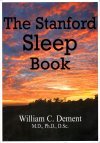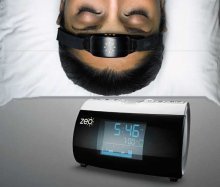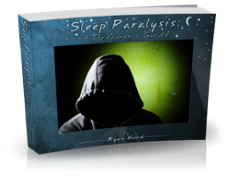
| Connect & Subscribe |
The following is a visitor-submitted question or story. For more, you can submit your own sleep story here, or browse the collection of experiences and questions other visitors have shared here.
Narcolepsy: A Personal Story
by Pam Ratcliff
(Vancouver, BC, Canada)
If your child, student or employee falls asleep at inappropriate times on a consistent basis, please seek medical help.
Awake or deep sleep - no in-betweens for narcoleptics.
Narcoleptics are either awake or in full REM (rapid eye movement) sleep mode - there is nothing in-between for those of us who suffer from this very strange and much misunderstood disorder.
In January 1998 I was diagnosed with Narcolepsy. I was 45 and had suffered with the symptoms of this sleep disorder since I was a teenager. I remember the symptoms during puberty, including ringing in my head and ears, fainting spells and difficulty getting up in the morning.
My mother dismissed the symptoms as "just puberty" and I don't recall it ever being discussed with the family doctor. Since I was 16 and began full-time work, I've had a continual battle with getting up in the morning and fighting the sudden onset of afternoon "sleep attacks" at my desk.
There was constant stress, trying to explain to my employer why I was late for work or, worse, asleep at my desk at three in the afternoon. These attacks happened like clockwork, usually around mid-afternoon.
Sure, many people feel sleepy at their jobs in the afternoon. But there's a big difference between feeling sleepy and falling asleep suddenly, without warning. It was frustrating and embarrassing, sometimes provoking laughter and derision from my fellow workers whose lack of understanding and compassion led many to assume I must be lazy, unmotivated or bored.
Excessive daytime sleepiness (EDS) is a complex condition. Some who suffer sudden sleep attacks may appear “awake” but are actually exhibiting a brief attack of REM, or dream stage, sleep. Others may do a complete face plant into their food or onto their desk and appear to have lost consciousness but they are, in fact, asleep.
Over the years, the symptoms progressed and the sleep attacks happened not only at work, but also during normal activities such as watching a movie or TV, dining with friends, attending seminars or meetings and while driving.
I had mentioned my problem with EDS several times over the years to my family doctor, who tested me for mononucleosis, diabetes and low blood count. His only suggestion - get to bed earlier in the evening!
Narcolepsy was never considered.
In September 1996 I suffered a one time only 'grand male' seizure while dining with friends at a restaurant. There are different types of seizures but the classic grand male involves a total loss of consciousness and convulsions.
I suppose I decided that enough was enough when I suffered the grand male seizure and spent several hours in the UBC Hospital emergency room. They poked and prodded and suggested I pursue with my family doctor a series of tests related to seizures.
My family doctor sent me for an EEG
I had to persevere with him to send me for the remaining tests that had been suggested at UBC Hospital, including a CAT scan and examination by a neurologist. The CAT scan was normal and the neurologist, after ordering a second EEG that was also normal, said he could find nothing wrong.
He also said the diagnosis of Epilepsy was incorrect.
He took me off Dilantin, but still there was no mention of Narcolepsy. I still don't know whether the seizure was related to Narcolepsy and have had no further seizures.
But over the next year I was becoming increasingly concerned about the dangers of driving when it was so easy for me to fall off to sleep. In the summer of 1997, while visiting my family doctor for a yearly exam, I suggested he refer me to the Sleep Disorders Clinic at UBC. I felt perhaps I might get some answers there.
He made the referral and between June and November 1997, I did the preliminary work required for having a sleep study performed at the clinic. Among other things, I had to complete a lengthy medical questionnaire and keep a two-week sleep chart.
In December 1997 I spent two nights and a day at the clinic which involved two overnight Polysomnogram tests (PSG) and a daytime Multiple-Sleep Latency test (MSLT). In January 1998 I received the diagnosis of a classic case of Narcolepsy.
I was put on a mild dose of Ritalin which generally seems to control the sleep attacks. I have had to make a few minor changes to my lifestyle - such as flexible working hours, scheduled naps, no alcohol and ensuring I have taken my medication prior to appropriate activities such as driving. I still exhibit the other symptoms of the disorder which include a mild form of cataplexy - a sudden involuntary loss of muscle control, hypnagogic hallucinations - vivid, realistic dreams, sleep paralysis, automatic behaviour and disrupted nighttime sleep, but feel much more secure knowing I can drive home or sit in a movie theatre with a friend and not have to worry about the danger or embarrassment of falling asleep.
It's important that parents and teachers are aware of Narcolepsy symptoms, especially since they generally start to appear during the teen years. It is equally important for employers to be familiar with the disorder in the event that they end up with a staff member who suffers from it.
Eighty percent of those with Narcolepsy spend their lives with low self-esteem and are subjected to constant ridicule.
But there is help available.
About This Site
Welcome! This site is continuously being created by students of Dr. William C. Dement's Sleep And Dreams course at Stanford University.
We made this site as a call to action for people all over the world to live healthier, happier, safer, and more productive lives by learning about their own sleep. We have faith that reading the information provided on this site will motivate you to be smart about your sleep deprivation and strategic about your alertness in order to live life to your fullest, most energetic potential.
In fact, we challenge you to do so! What do you say, are you up for the challenge?
Interviews With Sleep Specialists: Insights Into the Worlds of Sleep Medicine & Sleep Business
America's Most Dangerous Disorder: What Is Sleep Apnea Doing To Your Sleep?
Sleep Debt: How Much More Will You Achieve When You Reduce Yours?
The Stages Of Sleep: The Journey Through The Night
Delayed Sleep Phase: You Want To Sleep But You're Not Tired Yet
Paralyzed at Night: Is Sleep Paralysis Normal?
Sleep In Words: Smart, Strange, and Funny Quotes About Sleep
Sleep Disorders In Children: What's Keeping Your Child From A Full Night's Rest?
Attacks of Pavor Nocturnus (a.k.a. Sleep Terrors, Night Terrors, or Incubus Attacks)
A Note On Visitor-Submitted Questions:
Publishing sleep stories and questions from our visitors is meant to create a forum for open and proactive dialogue about an extremely important portion of our lives (one that occupies 1/3 of it and affects the other 2/3) that isn't talked about enough. It is not meant to substitute a trip to the doctor or the advice of a specialist. It's good to talk; it is not good to avoid consulting someone who's profession it is to help you with this kind of stuff.
If you are in any way concerned about your sleep health, don't wait for an answer on here, and don't necessarily rely on them. See a sleep specialist in your area as soon as possible.
The Stanford Sleep Book
Dr. Dement's pioneering textbook has been the core text for Sleep and Dreams since 1980, but it has just recently been made available to the wider public for the first time.
In it you'll find a more detailed account of the most important things you need to know about sleep, alertness, dreams, and sleep disorders. Studies, statistics, plus plenty of Dr. Dement's classic anecdotes painting the history of sleep medicine.
Preface | Intro | Contents | Get A Copy
More Sleep Resources
The Zeo
A revolution in personal sleep tracking, the Zeo is a wireless headband that transmits your brainwaves in realtime to a dock (pictured here) or your smartphone. The result? You can wake up and see exactly what stages of sleep you were in during the night! Unprecedented personalized sleep knowledge.
Sleep Paralysis: A Dreamer's Guide
Ever woken up paralyzed? A surprising number of us have, believe it or not. But few know the actual causes of this phenomenon, and fewer still how to exert control over it. Dream researcher and sleep paralysis expert Ryan Hurd shares breakthrough insights into how to do just that.
Important Disclaimer
Please Note:
The information found on this page and throughout this site is intended for general information purposes only. While it may prove useful and empowering, it is NOT intended as a substitute for the expertise and judgments of healthcare practitioners.
For more info, see our
Terms of Use.









